Results 9,021 to 9,030 of 12096
Thread: Anandtech News
-
01-08-19, 10:30 AM #9021
Anandtech: CES 2019: Samsung Launches The Notebook 9 Pro And Notebook Flash
Samsung announced several products at its press conference today at CES, including a couple of very nice looking notebooks, aimed clearly at opposite ends of the market. The Samsung Notebook 9 Pro is a premium Ultrabook, and the Notebook Flash is a budget device with some nice features for the price range.
Samsung Notebook 9 Pro
Samsung’s latest entrant in the Ultrabook range is the Notebook 9 Pro, featuring a diamond-cut aluminum chassis, and thin 6.7 mm bezels surrounding the 13.3-inch 1920x1080 display. The Notebook 9 Pro is powered by the latest Whiskey Lake processors, specifically the Intel Core i7-8565U with a base frequency of 1.8 GHz, and a boost frequency of 4.6 GHz. This is paired with Intel’s UHD 620 graphics.
The laptop is listed as 8 GB of LPDDR3 RAM and a 256 GB NVMe drive. As this model isn’t available yet, we’re unsure if there will be upgradable SKUs for this as well but it is very likely there will be. The laptop features a 55 Wh battery, and Samsung rates it as up to 14 hours of battery life. The wireless is listed as 802.11ac 2x2 Giga, meaning it’s likely the Intel 9265 network adapter. A premium Ultrabook should offer Thunderbolt 3, and the Notebook 9 Pro offers two TB3 ports, along with USB-C and microSD.
The laptop is thin and light, although not class leading. At 14 mm (0.55-inches) thick, and coupled with the 2.84 lb weight, it should be easy to transport. The laptop also comes with an active pen, which is a nice feature. Pricing is not yet announced, but the laptop will be available in early 2019.
Samsung Notebook Flash
Buyers have their pick of plenty of great Ultrabooks these days, but those looking for a laptop on the other end of the pricing spectrum have been hard pressed to find too much innovation. Samsung is stepping in to help fill this void with the Notebook Flash. This is a great looking notebook for this price segment, and offers some features not found in many other laptops in this class.
The charcoal exterior is plastic, but has a modern look to it with a textured chassis that should really help to knock down the smudges. The 13.3-inch display is a 1920x1080 panel as well, which likely means it’s an IPS and not the TN variants we still sometimes see at this end of the price range. We’ve reached out to Samsung to clarify. The display bezels aren’t quite as thin as some of the more premium designs, but again, not unexpected for the price. There's even a fingerprint reader available.
Samsung powers the Notebook Flash with either the Intel Celeron N4000, which is a dual-core Gemini Lake SoC, with a 1.1-2.6 GHz frequency range. For $50 more, buyers would be well served to step up to the optional Intel Pentium Silver N5000, which is still Gemini Lake and therefore Atom based, but with four cores and a 1.1-2.7 GHz range.
Samsung offers the Notebook Flash with 64 GB of eMMC, which is enough for light work, and there’s a microSD / UFS slot as well if more space is required. The laptop only offers 4 GB of RAM, but thanks to Gemini Lake this will be LPDDR4, and the 39 Wh battery is rated for up to 10 hours. There’s two USB-C ports, one USB 3.0 Type-A, and one USB 2.0 Type-A, along with HDMI. Wireless is the same as the 9 Pro, which is a 2x2 Giga rated, so likely the Intel 9265.
The Notebook Flash will be available on January 15th, with the N4000 model priced at $349.99, and the N5000 for $399.99.
Source: SamsungSamsung Notebook Notebook 9 Pro Notebook Flash CPU Intel Core i7-8565U
4C/8T 1.8-4.6 GHz
15W TDPIntel Celeron N4000
2C/2T 1.1-2.6 GHz
Gemini Lake
Intel Pentium Silver N5000
4C/4T 1.1-2.7 GHz
Gemini LakeRAM 8 GB LPDDR3 4 GB LPDDR4 Storage 256 GB NVMe 64 GB eMMC Display 13.3-inch 1920x1080
350 nits
6.7 mm bezel13.3-inch 1920x1080 anti-glare Battery 55 Wh, Fash Charging 39 Wh Ports 2 x USB Type-C Thunderbolt 3
1 x USB Type-C
Headet
microSD2 x USB Type-C
1 x USB 3.0 Type-A
1 x USB 2.0 Type-A
HDMI
UFS / microSD Combo
HeadsetDimensions 12.1 x 8.1 x 0.55 inches 12.69 x 8.64 x 0.67 inches Weight 2.84 lbs 3.02 lbs Material Aluminum Textured plastic Windows Hello Fingerprint Fingerprint Networking 802.11ac 2x2 Wide Channel 802.11ac 2x2 Wide Channel Availability Early 2019 January 15
$349.99 N4000
$399.99 N5000
More...
-
01-08-19, 11:00 AM #9022
Anandtech: More Intel 9th Gen Desktop CPUs: Core i7-9700, Core i3-9100, Pentium Gold
After yesterday when Intel casually mentioned that it was announcing six new processors in its 9th Generation desktop line, without providing any specifications through the usual channels, it turns out that there are several more on the way beyond the six mentioned.
Over at Dell’s Australia website, it has updated one of its mini-PCs to offer the Core i7-9700, the Core i3-9100, and the Pentium Gold 5420 processors. These three go beyond the six that were mentioned in Intel’s keynote, but Dell has some of the specifications on hand. Here is what the current 9th Generation processor lineup looks like now:
On top of that, there is one new processor that doesn’t fall into either of the two buckets, and is strange all on its own. Astute eyes found the Core i3-8100F listed on Intel’s public CPU database, ARK, but only if one goes searching for a specific CPU number. (This sometimes means the CPU is off roadmap). This is an 8th Generation processor, but it follows the naming scheme of the new processors, where ‘F’ processors have zero integrated graphics.Intel 9th Gen Core CPUs AnandTech Cores Base
FreqTurbo
FreqIGP IGP
FreqDDR4 TDP Price
(1ku)i9-9900K 8 / 16 3.6 GHz 5.0 GHz UHD 630 1200 2666 95 W $488 i9-9900KF 8 / 16 3.6 GHz 5.0 GHz - - 2666 95 W - i7-9700K 8 / 8 3.6 GHz 4.9 GHz UHD 630 1200 2666 95 W $374 i7-9700KF 8 / 8 3.6 GHz 4.9 GHz - - 2666 95 W - i7-9700 8 / 8 ? 4.7 GHz UHD 630 ? 2666 65 W ? i5-9600K 6 / 6 3.7 GHz 4.6 GHz UHD 630 1150 2666 95 W $262 i5-9600KF 6 / 6 3.7 GHz 4.6 GHz - - 2666 95 W - i5-9400 6 / 6 2.9 GHz 4.1 GHz UHD 630 1050 2666 65 W - i5-9400F 6 / 6 2.9 GHz 4.1 GHz - - 2666 65 W $182 i3-9350KF 4 / 4 4.0 GHz 4.6 GHz - - 2400 91 W - i3-9100 4 / 4 ? 4.2 GHz UHD 630 ? 2400 65 W ? Pentium G5420 2 / 4 3.8 GHz - ? ? 2400 ? ?
All in all, for anyone trying to keep track of the different types of processors that Intel offers, this is all very confusing, and it doesn’t have to be.Intel 9th Gen Core CPUs AnandTech Cores Base
FreqTurbo
FreqIGP IGP
FreqDDR4 TDP Price
(1ku)i3-8100 4 / 4 3.6 GHz - UHD 630 1100 2400 65 W $117 i3-8100F 4 / 4 3.6 GHz - - - 2400 65 W -
Gallery: More Intel 9th Gen Desktop CPUs: Core i7-9700, Core i3-9100, Pentium Gold G5420, and a new Core i3-8100F ?

More...
-
01-08-19, 11:54 AM #9023
Anandtech: CES 2019: Samsung Announces The Notebook Odyssey
At the Samsung press conference today, Samsung announced its updated gaming laptop, the Samsung Notebook Odyssey. With the announcements by NVIDIA this week, it shouldn’t be a surprise to see a lot of updated gaming laptops, and Samsung’s 15.6-inch model offers the top of the range GeForce RTX 2080.
Samsung’s Notebook Odyssey is fully decked out, featuring a hex-core Intel Core i7, likely the Core i7-8750H, although not specifically named. There’s two SO-DIMM slots for DDR4, and by default it comes with 16 GB, although that will likely be configurable when the notebook launches. The heart of any gaming notebook is the GPU though, and the NVIDIA RTX 2080 is featured here, offering the highest performance of any laptop GPU.
There are two SSD slots, and the laptop comes with a single 256 GB NVMe drive, but users can add more if needed. There’s also a 1 TB HDD, which is useful for game storage considering the size of modern games with UHD assets.
The 15.6-inch display is a 1920x1080 panel, but with a 144 Hz refresh rate and G-SYNC capability, so gaming should be incredibly smooth considering the powerhouse of a GPU installed.
The all-aluminum laptop is fairy thin, at 19.9 mm, but still quite heavy being that it’s a gaming laptop and has to cool a lot of hot components. At 2.4 Kg / 5.2 lbs, it’s somewhat portable. It’s about half the weight of a DTR machine, but the two “Jet Blade” blowers have 83 blades each, and there is a five-heatpipe heat transfer system as well, so the laptop should be able to stay cool, but that doesn’t mean it will be quiet.Samsung Gaming Notebook Notebook Odyssey CPU Intel Core i7
Hex-Core (likely i7-8750H)GPU NVIDIA RTX 2080 RAM 16 GB DDR4 Storage 256 GB NVMe + 1TB HDD
2 SSD slots, 1 2.5" HDD slotDisplay 15.6-inch 1920x1080
144 Hz G-SYNCBattery 54 Wh Ports 1 x USB Type-C
3 x USB 3.0 Type-A
HDMI
EthernetDimensions 358 x 270 x 19.9 mm
14.1 x 10.6 x 0.78 inchesWeight 2.4 Kg / 5.2 lbs Material Aluminum Networking 802.11ac 2x2 Availability Early 2019
Samsung hasn’t announced pricing yet, but the Notebook Odyssey will be available in early 2019.
Source: Samsung
More...
-
01-08-19, 12:56 PM #9024
Anandtech: CES 2019: Rivet Networks Killer E3000, a 2.5 GbE Controller
The Killer brand of networking controllers and Wi-Fi modules have been a constant part of the computing ecosystem for over a decade. As of late, the value-add of their products has been the implementation of heuristic analysis techniques to detect data stream types (video, torrent, gaming), allowing the hardware to prioritize data streams accordingly. Last year, Rivet Networks (the company that develops and owns Killer) announced a collaboration with Intel to develop an 802.11ac Wave 2 module, built on Intel hardware, but with the Killer secret sauce. For CES this year, the company is announcing its foray into multi-gigabit Ethernet controllers.
The Killer E3000 is a networking chip that supports 2.5 gigabit, 1 gigabit, and 100 megabit connectivity speeds. It will debut on a number of OEM devices during Q1, including Dell, Alienware, Acer, and also desktops and motherboards. The chip uses Killer's Advanced Stream Detect Technology that classifies data streams and prioritizes the data pipe accordingly, catching any software that is not already in a predetermined 1000 application settings list.
Control over the prioritization will be done through the latest new Killer Control Center 2.0 software, allowing users to manually configure or monitor network activity. The software also comes with GameFast, which pauses known processes that steal CPU cycles (such as search indexing or background maintenance) during gameplay. Rivet reports up to 10-20% of CPU and memory can be saved depending on the system in question. The software also includes KIE, Killer's Intelligence Engine, that will offer suggestions to improve network connectivity based on the settings of the system and the quality of the connection.
Obviously, the big question around 2.5 GbE networking is asking where the switches are - there's no point having 2.5 GbE if there's nothing to connect it to! Rivet Networks answered this by saying that as routers come to the market that support >1 Gbps Wi-FI speeds, such as Wi-Fi 6 (802.11ax), physical connections to these routers will also need to be upgraded to ensure consistent data-rates for all connected devices.
In the press release, it was confirmed that Acer's new Predator Triton 900 and Triton 500 gaming notebooks will support the Killer E3000 controller. Other devices will be announced through 2019.
More...
-
01-08-19, 02:08 PM #9025
Anandtech: New Generation of Optane M.2 SSDs Coming Soon
Intel's Optane products so far fall into one of two categories. At the high end is the flagship P4800X enterprise SSD and its derivatives for the enthusiast market. At the low end are the small M.2 modules intended primarily for caching use. It's this latter category that is being upgraded from PCIe 3x2 to a PCIe 3x4 host interface, moving the cache drives and small Optane SSDs more toward the mainstream NVMe SSD market.
Based on leaked roadmaps, we know that the original Optane Memory and its refresh Optane Memory M10 are being replaced by the new Optane Memory M15, codenamed Carson Beach. The Optane SSD 800P is being replaced by the new Optane SSD 815P, codenamed Bombay Beach. Capacity options are changing slightly for the M15 cache modules, which offer 16GB to 128GB in M.2 2280 form factor and 16GB to 64GB in M.2 2242 size. The Optane SSD 815P will be available in the same 58GB and 118GB capacities as the 800P.
It appears that Intel is continuing with the rather confusing mismatch of advertised capacities between the Optane Memory and Optane SSD products. In reality, the Optane Memory 64GB and Optane SSD 58GB products have the exact same usable capacity, and the same will hold true for the 128GB vs 118GB. The smaller advertised capacities are more in line with how SSD vendors traditionally relate claimed GB to actual usable capacity, while the Optane Memory parts are advertising the nominal raw capacity of their 3D XPoint memory without reflecting space used for error correction or spare area for defect and wear management.Intel Optane Consumer M.2 Product Lineup First Generation Second Generation Caching Modules Optane Memory
(16GB, 32GB)
Optane Memory M10 (16GB, 32GB, 64GB)Optane Memory M15
(16–128GB, PCIe 3x4)Standalone SSD Optane SSD 800P
(58GB, 118GB)Optane SSD 815P
(58GB, 118GB, PCIe 3x4)Hybrid NAND+Optane Optane Memory H10
16GB+256GB,
32GB+512GB,
32GB+1TB
PCIe 3 x2+x2
The system requirements for the above Optane products are unchanged from their predecessors. Optane Memory caching requires a Kaby Lake or newer platform and the use of Intel's Optane Memory storage drivers for Windows. Otherwise, both the M15 and 815P are standard NVMe SSDs that can be used as regular data or boot drives in any system that supports flash-based NVMe SSDs.
The third new Optane product is by far the most interesting: the Optane Memory H10 with Solid State Storage, codenamed Teton Glacier. Where previous Optane Memory products have been intended to serve as a cache in front of a mechanical hard drive, the H10 is Optane caching for QLC NAND, with both 3D XPoint and flash memory on the same M.2 module. The H10 bundles 16GB of Optane cache with 256GB of QLC NAND, or 32GB cache with 512GB or 1TB of QLC.
So far, Intel has only shared a mock-up rendering that looks like an Intel 660p and Optane Memory module squeezed onto one M.2 2280 card, but with enough changes to the layout that it doesn't appear to be just a photoshop of images of the two existing products. The first half of the board appears to contain the same Silicon Motion SM2263 controller used on the 660p, and one package each of DRAM and QLC NAND. The second half of the board looks like an existing Optane Memory module, with its own controller and 3D XPoint memory packages. We're not sure if this photo is an accurate representation of the real product, but it indicates that two PCIe lanes are routed to the SM2263 controller and two to the Optane controller. This suggests the Optane Memory H10 will appear to the host system as two different NVMe SSDs, and will likely require PCIe port bifurcation support to operate a PCIe x4 M.2 slot as two PCIe x2 links. This could potentially limit compatibility to M.2 slots that use PCIe lanes provided by the PCH. Officially, the Optane Memory H10 will require a Whiskey Lake or Coffee Lake platform. Unofficially, this may be the first Optane product that doesn't work out of the box as a plain NVMe SSD on any platform that supports NVMe. The dual-controller nature of the H10 means that the SSD caching functionality still depends on driver software, and is not managed transparently by the SSD itself. Intel will have to develop a unified 3D XPoint+3D NAND controller to pull that off.
Intel has not formally announced any of these three new Optane products, but we expect to get more official information from them soon and will update this article with any new details. The Optane Memory H10 is planned for release in spring 2019 and we expect the M15 and 815P to arrive at the same time or sooner.
More...
-
01-08-19, 02:08 PM #9026
Anandtech: CES 2019: ASUS Unveils the ROG Matrix RTX 2080 Ti With Hybrid Cooling
ASUS has announced a brand new Turing based model to their range with the ROG Matrix RTX 2080 Ti graphics card. The Matrix branding is synonymous with premium and the RTX 2080 Ti feature set looks nothing short of feature packed.
What makes the ROG Matrix RTX 2080 Ti stand out from the crowd is the use of ASUS's new Infinity Loop cooling hybrid cooling solution. Infinity Loop integrates a closed loop cooling system within the cooling shroud housing a pump, radiator and tubing within a triple fan designed cooler. Due to constraints that are associated with cramming numerous components underneath what looks like a seemingly regular GPU cooler, the ROG Matrix RTX 2080 Ti takes up a total of three PCIe slots. ASUS claims the Infinity Loop cooling solution beats rival vendors with 120mm hybrid cooling designs and even competes with models that feature 240mm radiators.
Included on the rear of the PCB is a metallic carbon fibre styled backplate with swathes of RGB LED lighting throughout the cooler which is supported by the ASUS AURA Sync software. The Infinity Loop cooler has three Axial-Tech fans and also features 0db technology. This means when the card is operating below 55 degrees Celsius, the Matrix cooler operates passively for optimal acoustic performance while light gaming and performing general tasks such as web browsing.
In line with a top of the range product, ASUS has stated that each ROG Strix RTX 2080 Ti PCB used goes through an aggressive binning process to ensure each Matrix card adheres to the high boost core clock speed of 1815 MHz out of the box. This is an 11% overclock over the standard RTX 2080 Ti Founders Edition which has a boost core clock of 1635 MHz out of the box. The GDDR6 memory of the ROG Matrix RTX 2080 Ti is also overclocked to 1850 MHz while the Founders Edition model has a memory clock of 1750 MHz. This makes the ROG Matrix one of the fastest out of the box RTX 2080 Ti models on the market.
The rear panel of the ROG Matrix RTX 2080 Ti deviates from the standard RTX 2080 Ti Founders Edition slightly with two DisplayPort 1.4, two HDMI 2.0b and a USB Type-C VirtualLink video output. Power wise the Matrix RTX 2080 Ti uses two 8-pin PCIe power inputs and has a rated TDP of 300 W; 40 W more than the RTX 2080 Ti Founder Edition model which has a 260 W rating.
ASUS hasn't specified a price as of yet for the ROG Matrix RTX 2080 Ti but given utilization of the exclusive Infinity Loop cooling technology, it's not expected to be cheap. The ROG Matrix RTX 2080 Ti is set to make its entry into the market later this month.
More...
-
01-08-19, 02:40 PM #9027
Anandtech: SanDisk's Mainstream Extreme PRO Portable SSD Goes NVMe
At CES 2019, Western Digital demonstrated a number of direct-attached flash solutions. Out of all the showcased items with imminent retail availability, one deserves separate mention. Under the SanDisk brand, Western Digital is introducing an higher-performance follow-up to the the SanDisk Extreme Portable SSD (a portable USB DAS that has impressed us with its performance and thermal characteristics). The new product carries the PRO branding and will be available in retail in Spring 2019.
Almost all high-end flash-based bus-powered storage devices now use a Thunderbolt 3 Type-C interface with a PCIe 3.0 x4 NVMe SSD behind the Alpine Ridge controller. Some vendors have made an attempt to bring economical alternatives in this market segment by using a PCIe 3.0 x2 NVMe SSD (reference design from Phison). However, leading brands such as Western Digital / SanDisk and Seagate have refrained from playing in this market with mainstream offerings. The reason is not hard to see, as these high-performance Thunderbolt 3 SSDs can't be used with regular USB Type-C ports despite being physically compatible. This results in the vendors having to field customer support calls from the average users.
Thanks to the introduction of USB to NVMe bridges such as the JMicron JMS583 and the ASMedia ASM2362, it is now possible to create M.2 NVMe SSD enclosures with a USB interface. Intel's Titan Ridge Thunderbolt 3 controller (the follow-up to Alpine Ridge) also includes a USB fall-back when used in client devices (Alpine Ridge has USB fall-back only when used in a host configuration). We reviewed MyDigitalSSD's M2X Storage Enclosure (using the JMS583 bridge chip), and found that it delivered great performance. Such storage enclosures do come with some caveats - particularly with respect to the firmware / power state configurations of the NVMe SSD being used.
Western Digital is introducing a similar configuration with the SanDisk Extreme PRO Portable SSD. The form factor and industrial design seem to be following the venerable SanDisk Extreme Portable SSD, retaining the IP55 rating. That SSD uses a M.2 SATA SSD in a plastic enclosure with a silicon rubber coating. The Extreme PRO Portable SSD uses a NVMe drive, and the enclosure is made of aluminum (for better thermal performance) with the same silicon rubber coating. This is necessary because the NVMe SSD may likely end up generating more heat because of the increased speeds. Western Digital is claiming reads at up to 1 GBps with the Extreme PRO Portable SSD.
From a market perspective, it is great that WD is making NVMe-USB bridges mainstream. The firmware of the internal SSD is fully under their control, and the company does extensive validation prior to releasing products into the market. Therefore, we have no doubts that the 'ready-to-use out-of-the-box' SanDisk Extreme PRO Portable SSD will have very wide compatibility across a variety of USB ports (ranging from delivering full performance over USB 3.1 Gen 2 ports to operating within the power constraints enforced by USB ports in legacy systems).
The SanDisk Extreme PRO Portable SSD will be available in 500GB, 1TB, and 2TB capacities, starting in Spring 2019. Pricing is yet to be decided, though it will need to be competitive against similar-performing DIY configurations that can be built for around $90 / $135 / $260 at those capacity points. Like the SanDisk Extreme Portable SSD, the PRO version comes with a USB 3.1 Gen 2 Type-C interface, and includes a Type-A adapter. It will have a 3-year warranty.
More...
-
01-08-19, 03:31 PM #9028
Anandtech: Western Digital Demonstrates 4TB USB-C Thumb Drive Prototype at CES 2019
At CES 2019, Western Digital is demonstrating a prototype of a 4TB thumb drive with a Type-C interface. To be more precise, the form factor is that of a thumb drive, but the Type-C connector currently hangs off a wire. Given that it is a prototype, and has little chance of hitting the market at reasonable price points in the imminent future, this is expected. The main intent is to showcase the technological prowess of SanDisk's flash solutions. As expected, the prototype carries the SanDisk branding.
Based on the form factor, we believe that the product is using the 1.33Tb QLC 96L NAND that started sampling in Q3 2018.
The prototype bodes well for compact high-capacity thumb drives in the near future. These will be for use-cases where high performance is not a requirement (think of reads and writes in the 20 - 200 MBps range). We are waiting on WD to provide additional technical details regarding the actual configuration used in the prototype. We have also requested for the performance numbers they are able to achieve in such a compact form factor with the high-capacity dies.
More...
-
01-08-19, 04:31 PM #9029
Anandtech: CES 2019: Razor Displays The Razor Raptor Gaming Monitor
Razer is pretty well known for its gaming peripherals, as well as its gaming focused notebook lineup, so today’s announcement of a new gaming monitor from the company makes a lot of sense. It offers some excellent features for gamers, as well as the premium touch that Razer does so well.
The 27-inch display features a 2560x1440 resolution for the IPS panel, and offers a 144 Hz refresh rate. For gaming, response rate is also critical, and the Razor Raptor offers a 7 ms typical response, which can be reduced to 4 ms with Overdrive, and 1 ms with Motion Blur reduction. It features AMD Radeon FreeSync, which just got a lot more useful with NVIDIA’s announcement to finally support it, and coupled with the 144 Hz refresh rate, should offer incredibly smooth gaming under a wide variety of scenarios.
The display covers 95% of the P3-D65 gamut and offers a 1000:1 contrast ratio. Razer states that they will offer pre-programmed color profiles in the monitor itself, which is good news for users and hopefully will include a sRGB mode. The display features a picture-in-picture mode as well.Razor CES 2019 Razer Raptor Display Size 27-inch Panel Type IPS Resolution 2560x1440 Refresh Rate 144 Hz with FreeSync Response time 7ms typical
4ms Overdrive
1ms with Motion Blur ReductionContrast Ratio 1000:1 Brightness 420 nits Color Gamut 95% P3-D65 HDR Yes Connectivity 1 x HDMI 2.0
1 x DisplayPort 1.4
1 x USB Type-C with power delivery
2 x USB 3.0Availability Later 2019 Price $699.99
Razer has always offered a unique, premium design, and the Razor Raptor definitely follows in those footsteps. The display bezels are just 2.3 mm, and the base of the unit is made from forged aluminum. The backplate is a blend of fabric and metal, and the monitor offers some very unique cable management, with five CNC milled channels to house the five included Razer green cables. As a Razer product, it also of course supports the Razer Chroma lighting, with LED strips to illuminate the base customizable through their software.
There’s all of the expected connectivity as well, with USB-C, HDMI, and DisplayPort, with the USB-C also providing power delivery, and two USB 3.1 Type-A ports for peripherals.
Razer is expecting the Raptor to be available later this year, with an estimated MSRP of $699.99.
More...
-
01-08-19, 04:31 PM #9030
Anandtech: Western Digital at CES 2019: External Flash Storage Solutions Showcased
In addition to the SanDisk Extreme PRO Portable SSD and the 4TB thumb drive prototype demonstration, Western Digital also had announcements related to a couple of additional external flash storage solutions.
The WD My Passport Go is the entry-level portable SSD from the company, and it is marketed as an economical alternative to the My Passport SSD. It claims speeds of up to 300 MBps (pointing to the use of a low-cost TLC or QLC drive internally) and comes with a USB 3.0 Type-A interface (the integrated cable tucks into the shock-resistant rubber frame). The product has been available in retail for a few months now, priced at $170 for the 1TB version and $90 for the 500GB one.
A cloud-based subscription offering, 'Flashback', is also being launched at CES. It is being marketed as a cloud back-up service and is currently available along with two of their thumb drives - the SanDisk Ultra and the SanDisk Ultra Fit.
Pricing ranges from $1/yr for the 16GB models to $10/yr for the 256GB ones. The two thumb drives mentioned come with one year of free Flashback service. It is a nifty model, allowing consumers quick access to the contents of the USB drive if they don't physically have access to it at that moment. The downside is that the drive must be connected to an Internet-connected computer (PC or Mac) after any content changes in order to maintain the most recently copy of the flash drive contents in the cloud.
More...
Thread Information
Users Browsing this Thread
There are currently 34 users browsing this thread. (0 members and 34 guests)




_575px.jpg)

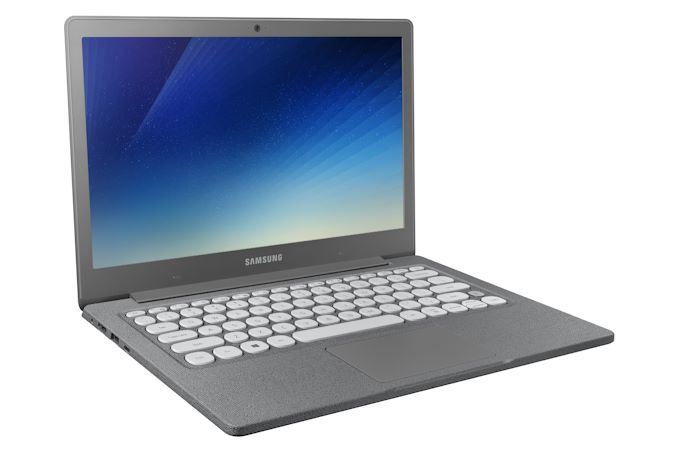
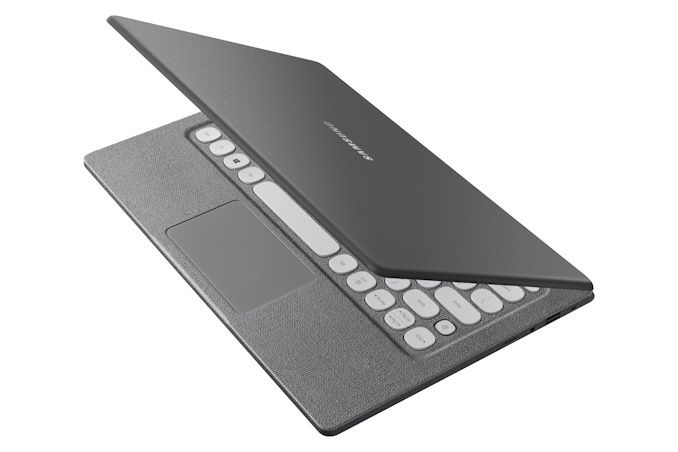
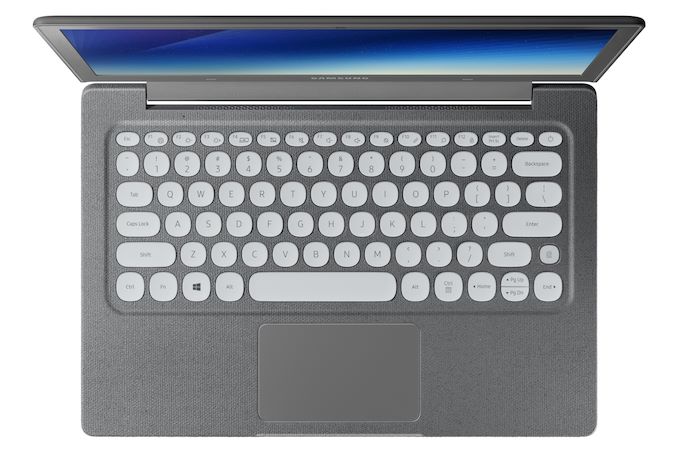

 Quote
Quote
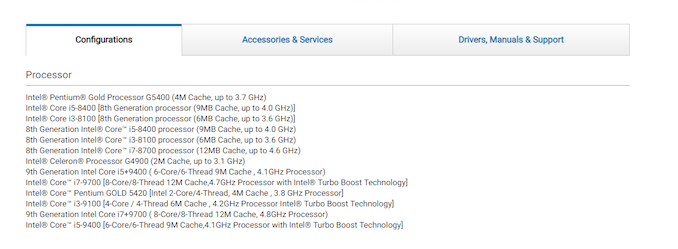
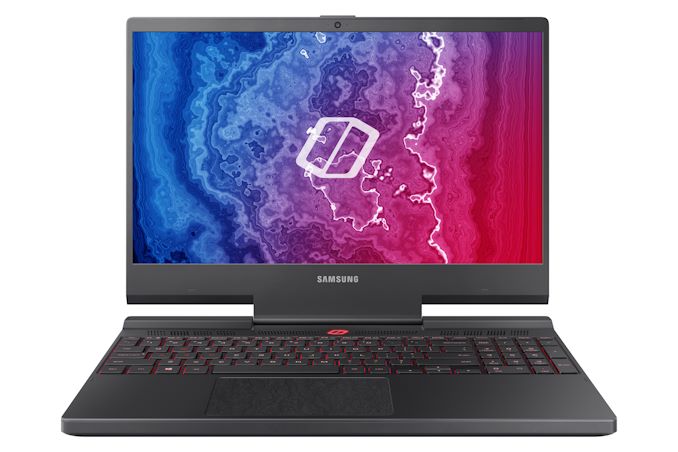
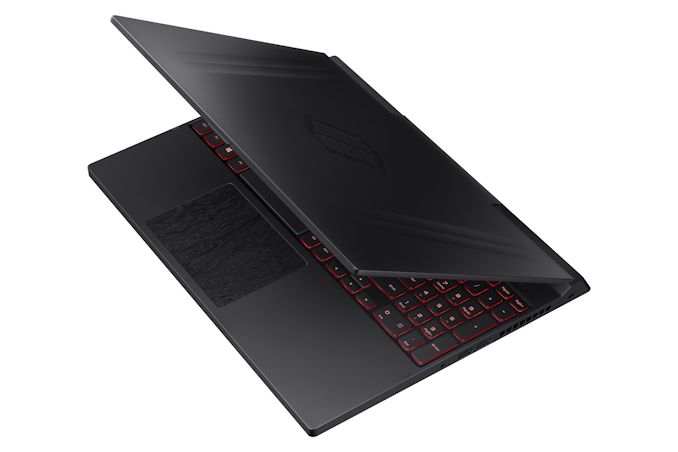
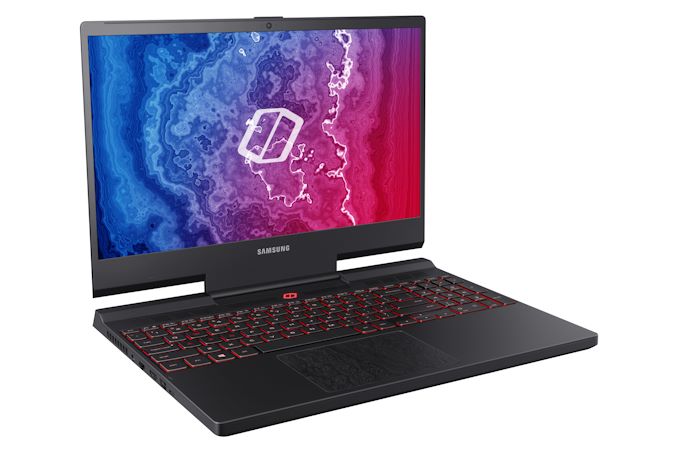

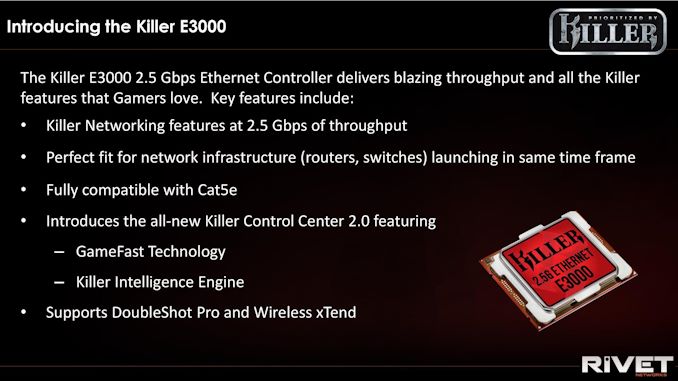
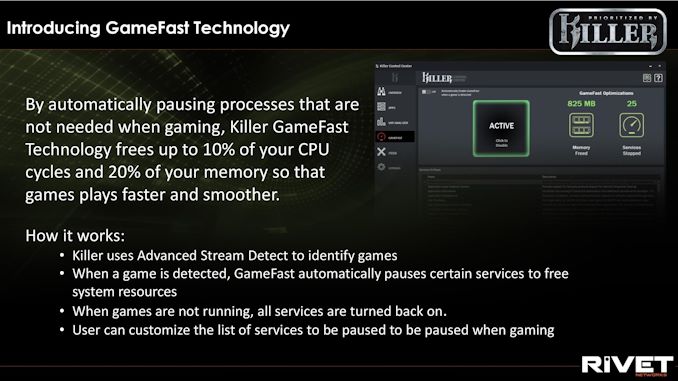
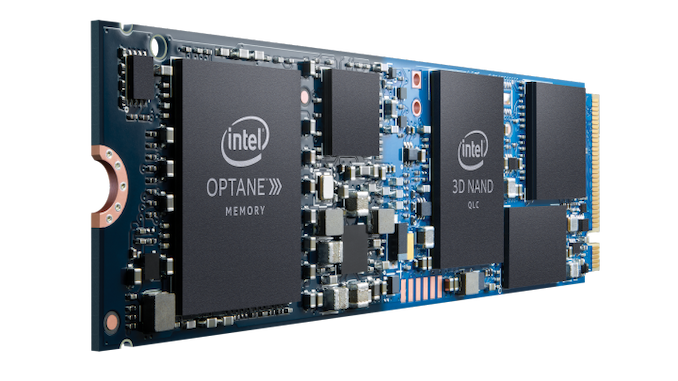
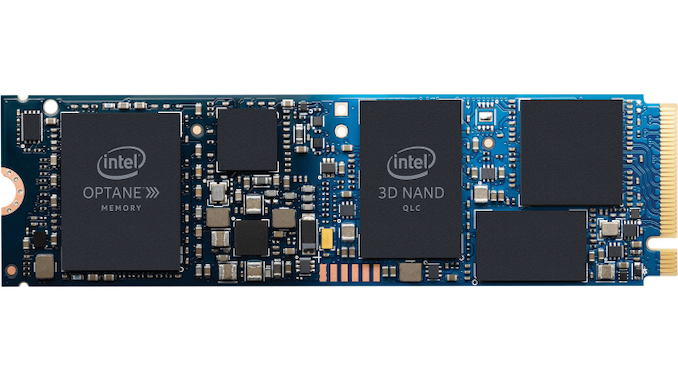



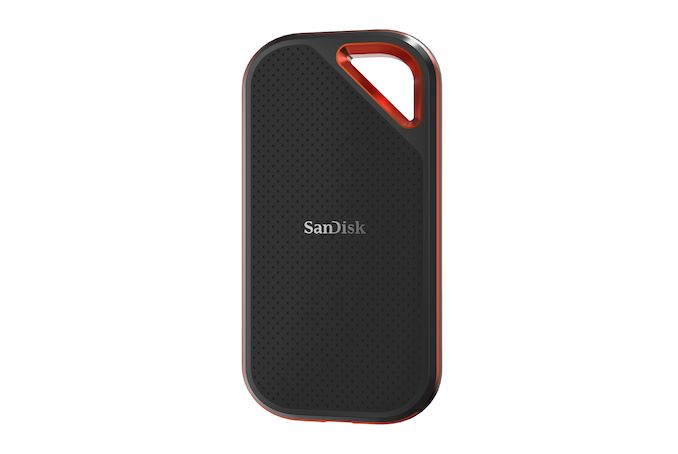
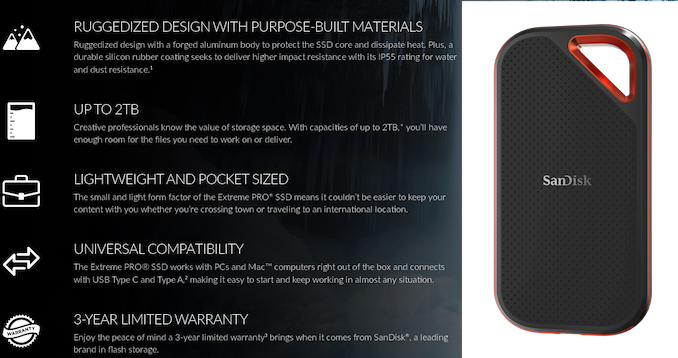
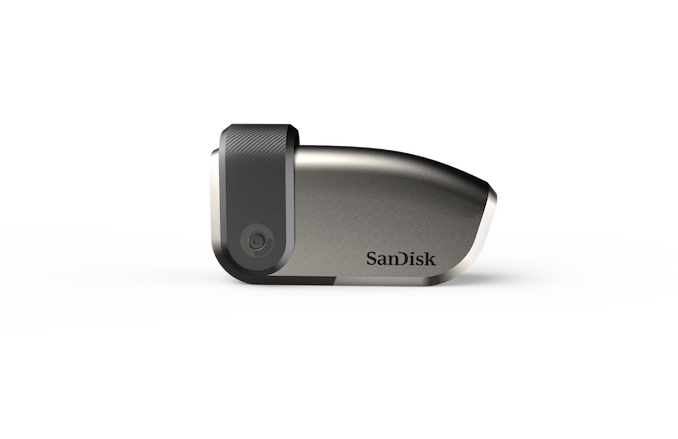
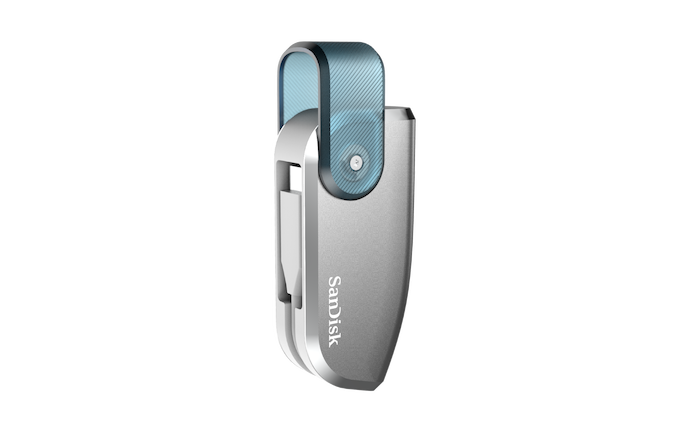
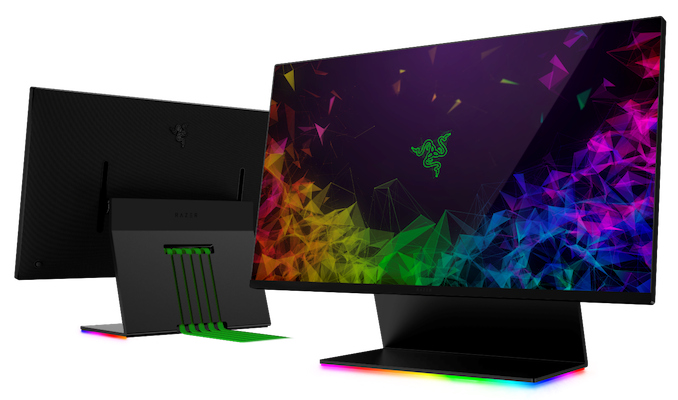
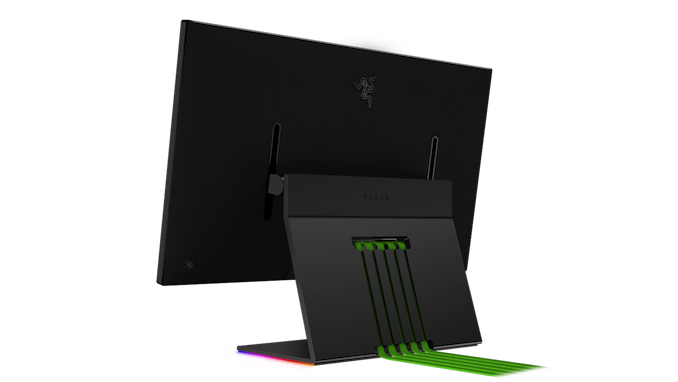
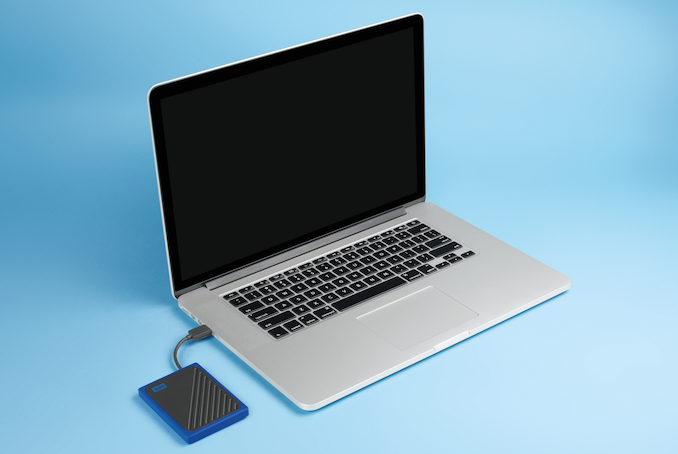
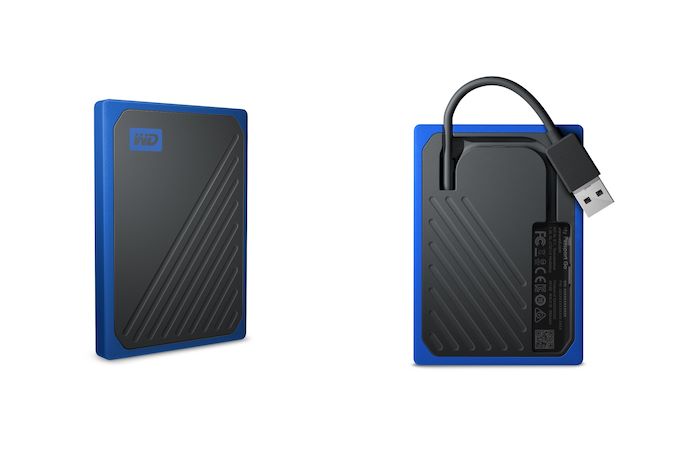

















Bookmarks